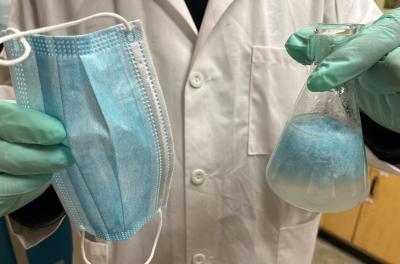Graphene-Info newsletter ( May 3, 2022 )
posted on
May 03, 2022 10:08AM

Hydrothermal Graphite Deposit Ammenable for Commercial Graphene Applications

Cannot read this? View it online here
It was recently reported that Advanced Graphene Products (AGP) has signed a long-term deal with Nanosphere to supply large amounts of graphene, which will be added to the anti-corrosion paint used in the production of innovative next-generation automotive driveshafts. They will be installed in vehicles by various European manufacturers, including BMW.
"The contract with Nanosphere was concluded by the end of 2028, under which each year we will supply graphene for the production of as much as 60 tons of anti-corrosion paint. This is our second implementation of Polish graphene on an industrial scale. The first was to start the production of filament for 3D printers with the addition of graphene. We are very pleased that less than six months after our debut on the New Connect market, we can boast of real commercial implementations. So far, graphene has been treated as a material mainly used in R&D departments. Today we can talk about the use of graphene on a mass scale. We are working on new products with graphene that will be used in the automotive, aviation, energy and chemical industries "- commented Maciej Gałązka, President of AGP, quoted in the release.
A joint research team, led by Prof. WU Zhongshuai and Prof. FU Qiang from the Dalian Institute of Chemical Physics (DICP) of the Chinese Academy of Sciences (CAS), recently proposed a strategy for boosting the capacitance of graphene-based planar micro-supercapacitors (MSCs) using highly concentrated water-in-salt ambipolar redox electrolyte (ZnI2 + ZnCl2).
Using redox-active electrolytes to boost graphene electrodes is a highly-efficient strategy to increase the capacitive performance of MSCs. However, previously reported redox mediators could only offer a certain capacitance for a single electrode, leading to limited energy density due to the unmatched capacitances of two electrodes.
Canada-based Nova Graphene has been awarded two contracts by Canada’s Department of National Defense's Innovation for Defense Excellence and Security (IDEaS) program, to develop graphene-enhanced materials to protect helicopter rotors from erosion & wear due to exposure to sand, ice, and water.
The ability to fly in degraded visual environments (e.g., rain or sand storms) is operationally advantageous, but tends to result in increased damage to the aircraft, especially erosion damage to the rotary wing blades. Each rotary wing blade has an integral leading edge erosion strip, which when damaged requires the replacement of the entire blade.
WearGraphene recently launched its Gamma graphene-enhanced winter jacket. I have spent a couple of months with this jacket, including two trips to Europe during the springtime, and here's my review.
First of all, the jacket looks very sleek (in my opinion, of course), the material feels of high quality. It is quite light, and packs very easily. There are many pockets, Velcro bands and drawstrings, which is really useful and helps you to customize this jacket so that it fits perfectly.
Graphene developer G6 Materials reported its financial results for Q1 2022 (ended February 2022). The company's revenues were $337,921, up 28% from last year, and the total loss increased 26% to $404,152.
As of February 28, 2022, total assets were $6.9 million. The company says it saw continued strong demand for its innovative formulations, along with impressive customer response to the relaunch of Graphene Supermarket. The company will soon launch its Breathe+ Pro medical grade air purifier product, and together with several major customer deals in the pipeline, it anticipates a very strong quarter.
A Washington State University (WSU) research team recently showed that used single-use masks, of the kind made ubiquitous in the pandemic, can be incorporated into a cement mixture (with the help of graphene oxide) to create stronger, more durable concrete. The team found that the mixture using mask materials was 47% stronger than commonly used cement after a month of curing.

“These waste masks actually could be a valuable commodity if you process them properly,” said Xianming Shi, professor and interim chair of the Department of Civil and Environmental Engineering and the corresponding author on the paper. “I’m always looking out for waste streams, and my first reaction is ‘how do I turn that into something usable in concrete or asphalt?’”